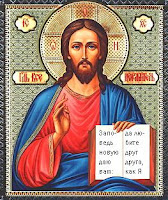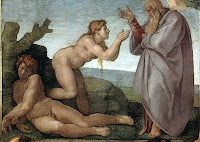Old Testament: Mythical or Literal?
Q: I would like to know what your views are on the interpretation of the Old Testament. Do you believe it to be partially myth, all myth or to be taken literally? How can we know we are interpreting it as God would have us understand it?
 A: I definitely believe that God intends us to accept the entire Old Testament as His inspired Word. Therefore, I reject the idea that any parts of the Hebrew Scriptures are mythological. My reasons for this are several, but the most important is that Jesus indicated this same idea both in direct references and through His entire earthly ministry.
A: I definitely believe that God intends us to accept the entire Old Testament as His inspired Word. Therefore, I reject the idea that any parts of the Hebrew Scriptures are mythological. My reasons for this are several, but the most important is that Jesus indicated this same idea both in direct references and through His entire earthly ministry.The clearest source comes as we read John 5. The Jewish leaders confronted Christ about His authority to heal on the Sabbath and to equate Himself with God the Father. To their challenges, Jesus directed them to God’s Word — at that time, the Old Testament. He said to them, “You search the Scriptures because you think that in them you have eternal life; and it is they that bear witness about me. (v. 39)” I cannot imagine the Son of God basing such important claims even partially on myths, fables, or lies.
As He preached and taught the disciples and the larger crowds, Jesus cited many books of the Bible. When predicting His death and burial, He didn’t talk about the “myth of Jonah” but said, “Just as Jonah was three days and three nights in the belly of the great fish, so will the Son of Man be three days and three nights in the heart of the earth. (Matthew 12:40)” Later in His ministry, He met another challenge from the Pharisees and Sadducees by saying that their “evil and adulterous generation” would receive no heavenly sign “except the sign of Jonah. (16:4)”
 Jesus also spoke of a literal Creation. He considered the accounts of man’s origins in Genesis 1 and 2 as complementary, not contradictory. We see this when He spoke of the divine institution of marriage. In Matthew 19:4-5, He said, “He who created them from the beginning made them male and female (cf. Genesis 1:27)”; therefore, “the two shall become one flesh. (cf. Genesis 2:24)”
Jesus also spoke of a literal Creation. He considered the accounts of man’s origins in Genesis 1 and 2 as complementary, not contradictory. We see this when He spoke of the divine institution of marriage. In Matthew 19:4-5, He said, “He who created them from the beginning made them male and female (cf. Genesis 1:27)”; therefore, “the two shall become one flesh. (cf. Genesis 2:24)”The author of Hebrews testified that “By faith we understand that the universe was created by the word of God, so that what is seen was not made out of things that are visible. (11:3)” This confession prefaces the entire chapter of testimonies about Godly, faith-filled Old Testament believers. Its inclusion leads us New Testament saints to listen to this “cloud of witnesses (12:1)” from the Hebrew Scriptures who urge us to keep “looking to Jesus, the founder and perfecter of our faith. (12:2)” At the same time, we realize that sharing their belief in God’s literal six day creation of the world is part of the faith that receives the Lord’s “commendation. (11:1)”
Saint Paul also accepted the divine creation of the universe as a simple fact. In Colossians 1:15-16, he used the Creation to point out the divinity of our Savior: “He is the image of the invisible God, the firstborn of all creation. For by him all things were created, in heaven and on earth, visible and invisible, whether thrones or dominions or rulers or authorities — all things were created through him and for him.” In the Fourth Gospel, Saint John said, “All things were made through him (1:3)” and “the world was made through him. (v. 10)”
 Such references as these indicate that Jesus and His followers accepted the existing Scriptures as an organic whole, having different human authors but one divine Source. The fact that God created the entire universe establishes His authority to judge it and to condemn sin and sinners. It also ties to the means of salvation He provided. Since God judged created mankind guilty of sinful rebellion and held it accountable for the corruption of Creation, He entered His own Creation as the Son of created human flesh in order to redeem mankind and restore fallen Creation.
Such references as these indicate that Jesus and His followers accepted the existing Scriptures as an organic whole, having different human authors but one divine Source. The fact that God created the entire universe establishes His authority to judge it and to condemn sin and sinners. It also ties to the means of salvation He provided. Since God judged created mankind guilty of sinful rebellion and held it accountable for the corruption of Creation, He entered His own Creation as the Son of created human flesh in order to redeem mankind and restore fallen Creation.Besides the history of the Creation and the account of Jonah, other “unbelievable” Old Testament passages also receive verification from both Old and New Testament sources. Many people have difficulty believing in a universal flood. However, Isaiah (Isaiah 54:9), Jesus (Matthew 24:36-39), and Saint Peter (1 Peter 3:18-20) all cite it as an historic event. Indeed, if the flood were a myth, then why would we not also deny baptismal regeneration, since Peter went on to say that “Baptism, which corresponds to [the Flood], now saves you (v. 21)”?
We could go on and on in showing how much of the New Testament directly references various parts of the Old. Quotes, citations, and allusions abound from Matthew through Revelation. Each of the Gospels connects the life and works of Jesus to Old Testament prophesies. The lives of many Old Testament people are attested by the genealogies of Matthew 1 and Luke 3, the heroes of faith in Hebrews 11, and elsewhere.
 Now that I’ve addressed the Old Testament as “myth,” I’d like to very briefly talk about your other point, whether the Hebrew Scriptures should “be taken literally.” I do think that all of the Bible is God’s divinely inspired, inerrant Word. However, the Scriptures are composed of different types of writing. Thus, we need a “literary” understanding before making a “literal” translation or statement of faith. Into what category does a passage belong? Is it history, poetry, direct prophecy, or illustrative vision?
Now that I’ve addressed the Old Testament as “myth,” I’d like to very briefly talk about your other point, whether the Hebrew Scriptures should “be taken literally.” I do think that all of the Bible is God’s divinely inspired, inerrant Word. However, the Scriptures are composed of different types of writing. Thus, we need a “literary” understanding before making a “literal” translation or statement of faith. Into what category does a passage belong? Is it history, poetry, direct prophecy, or illustrative vision?We are best served by first understanding the plain words of Scripture. I accept the historical sections of the Old Testament as accurate testimonies of past events. I take predictive prophecy at face value, as when God threatened judgments upon Israel and Judah through His prophets.
When Scripture plainly says that something is a “vision” or when symbolic numbers prevail (such as much of Ezekiel, Daniel, and Revelation) we should seek understanding according to the plain meaning of visionary and symbolic language.
 As a few examples, the Scriptures lead the reader to understand that the Devil is not an actual dragon (Revelation 12:9) nor is a flesh and blood prostitute going to parade about the earth before the Last Judgment (e.g., Revelation 17). The numbered time periods of Daniel and Revelation present themselves for symbolic interpretation while the days of Creation and the Flood speak plainly of literal, consecutive 24 hour days. As my final point, I certainly believe that the prophesied times in Revelation point to the actual return of Christ in judgment. However, I’d never use them literally to predict an actual date, since Jesus plainly tells us that “concerning that day or that hour, no one knows. (Mark 13:32)”
As a few examples, the Scriptures lead the reader to understand that the Devil is not an actual dragon (Revelation 12:9) nor is a flesh and blood prostitute going to parade about the earth before the Last Judgment (e.g., Revelation 17). The numbered time periods of Daniel and Revelation present themselves for symbolic interpretation while the days of Creation and the Flood speak plainly of literal, consecutive 24 hour days. As my final point, I certainly believe that the prophesied times in Revelation point to the actual return of Christ in judgment. However, I’d never use them literally to predict an actual date, since Jesus plainly tells us that “concerning that day or that hour, no one knows. (Mark 13:32)”See also the previous posts Seven Years, One Thousand Years and Scripture Interpretation and Church Attendance.
Scripture quoted from The Holy Bible, English Standard Version™, © 2001 by Crossway Bibles.
Send email to Ask the Pastor.
Walter Snyder is the pastor of Holy Cross Lutheran Church, Emma, Missouri and coauthor of the book What Do Lutherans Believe.
Technorati Tags: Bible | Scripture | Holy Scripture | exegesis | exegetical theology | Biblical theology | Old Testament | Hebrew Bible | Hebrew Scriptures | myth | mythology | literal translation | translation | literary criticism | Historical grammatical criticism

3 Comments:
What a Blessing to read your clear answer as I prepare for the Tenebrae service tonight.
Easter Blessings!
Craig
An excellent and thoughtful post. Thank you for addressing this in such detail. Happy Easter!
A real good concise example of Old testament interpretation. It's helping me prepare my message. Blessings from England!
Evan
Post a Comment
<< Home